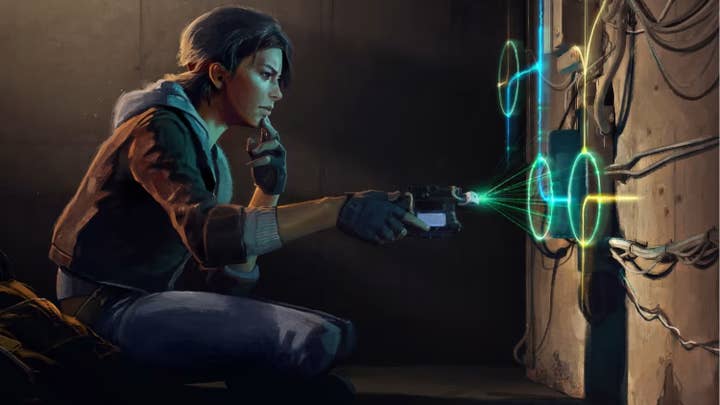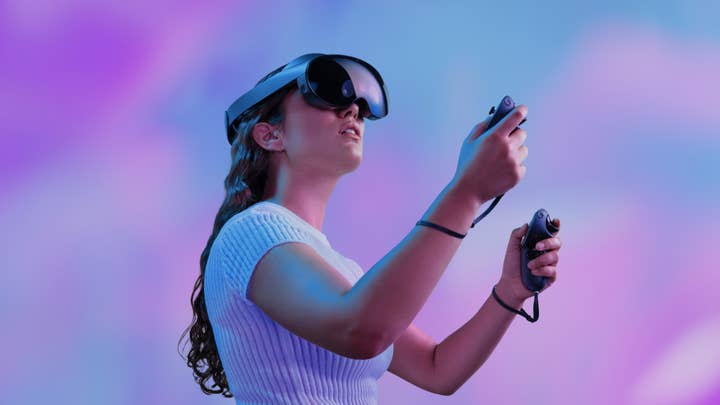VR isn't ready for a "must-play" experience | Opinion
Reggis Fils-Aimé is right about VR needing "must-play" games, but the sector isn't ready to play host to that kind of cultural phenomenon
What will it take for VR to grow beyond its niche status and become an important commercial pillar of the games industry? It's quite literally a billion dollar question – many billions, in fact.
Ever since Oculus kickstarted the current VR market ten years ago, there has been a fairly steady progression for the technology, with improvements in hardware and software alike coming at regular intervals.
The addressable audience has grown too, but for the most part that growth has been linear. Meta's range of Quest headsets are probably the best-selling devices in the space, selling around 20 million devices cumulatively. That's good growth, but it's not breakout growth – it shows VR becoming a larger niche, not VR breaking out of niche status entirely.
Former Nintendo of America president Reggie Fils-Aimé pointed recently to one key factor that VR might need to grow beyond a niche market – what he described as a "must-play" experience. He shared a chart from Statista, showing their forecast that VR will achieve 1.7% global market penetration by 2027, compared to 51.3% penetration for video game hardware overall, and commented that until must-play experiences are available, the chart's title – asking if VR was destined to remain a niche – would be true.
The point here is not to litigate the question of Statista's forecast here – they're very good at what they do, but I'm sure everyone knows that there are major limitations to the accuracy of this kind of prediction. Even a market forecast 12 months out is tricky, and that's a time period in which we have a good idea of products that will launch and general consumer and economic trends.
The growth curve of VR hasn't found the crucial tipping point where [it] reaches a critical mass and grows exponentially
Forecasting five years into the future for a rapidly evolving market like VR is subject to far too many unknowns and confounding variables, to the point where even with a rigorous statistical model and good data, the numbers are little more than educated guesses. Still, the broad forecast that the gaming hardware market is going to absolutely dwarf the VR market for many years to come seems to be on pretty solid ground.
This isn't to say that it won't be a nicely profitable little niche for many developers, of course. That leaked number of 20 million Quest devices sold gives some hint of the size of the addressable market right now, while Sony's PSVR headset also sold millions by providing an easy entry point for console consumers.
Even Statista's forecast, which may seem gloomy at first glance, is still suggesting roughly 23% of annual growth rate for the VR sector, which isn't shabby – but also doesn't constitute a break-out. The growth curve of VR has yet to take off; it hasn't found the crucial tipping point where the installed base reaches a critical mass and departs from its steady linear growth to instead grow exponentially.
So is Fils-Aimé right? Is a "must-play" game what the VR industry needs? That arguably depends on what we define as "must-play." Do we mean a big, critically acclaimed title that lots of people love and that gets great word of mouth, something like a God of War, or a Breath of the Wild?
Those games are certainly system-sellers – they shift a lot of hardware units – but are they what we mean by must-plays? If that's our definition, then you could argue that VR already has some must-plays – and indeed, Fils-Aimé's tweet was greeted with a chorus of VR fans arguing exactly that.
Half-Life: Alyx is the most obvious example, given that it was the first time in many years that we'd seen an instalment in this beloved franchise, and was pretty much acclaimed across the board. You could also make less obvious arguments for something like Beat Saber, given its sheer ubiquity and wide appeal, or critically acclaimed games like Boneworks, or even for some crossover titles like No Man's Sky and Gran Turismo 7, which can also be played on a TV screen but take on a whole new life in VR.
The best point of comparison for VR's games catalogue at this point probably lies around the year two mark for a successful games console
The people pointing to those games are right – VR isn't really lacking software any more, although the frequency of major releases still leaves much to be desired. Full-size titles on the scale of Alyx are also a bit thin on the ground – and Alyx itself hasn't made it to the most popular headsets, Quest and PSVR (at least not without game streaming shenanigans), which limits its capacity to be a killer app for the technology.
But the overall software library for VR is actually pretty good at this point, and while there's a fair bit of shovelware in there, there are also many high-quality games. The best point of comparison for VR's games catalogue at this point probably lies somewhere around the year two mark for a successful games console – not bad for a niche technology.
"Must-play," however, can be interpreted to mean something altogether bigger – a truly genre-defining, industry-changing game. Think World of Warcraft in its heyday, think Grand Theft Auto (both GTA3 and GTA5 arguably fit this profile), think Fortnite.
These are games whose mark on the landscape is indelible, and for a period in time (which Fortnite is still experiencing right now), it seemed like the whole world was playing – and all your friends expected you to play too. These games are something beyond a system-seller; they are cultural moments in their own right.
This is a much more restrictive definition of a "must-play" – we're talking about a game that is not just a must-play for people who like a certain genre, it's a must-play for people who want to keep up with this whole segment of culture in general. Its sheer critical mass makes playing it into an experience with immense social and cultural value to the player.

Given the providence of the comments we're discussing, it's interesting to ask when Nintendo last had a must-play that fits the latter definition. Pokémon Go is probably the closest thing in recent years, but that's a Niantic title that licensed the IP.
You could make the argument for the original Wii Sports being a must-play – and it did change the industry in its wake, ushering in a long and dark period of cheaply made games with terrible waggle-based controls, though that did at least ultimately lead us to the control system used by VR today.
The Switch, however, arguably doesn't have a must-play of that description at all. It has a lot of great games and plenty of system-sellers, but nothing on the Switch is really a genre-shaking titan of a game that will change the whole industry in its wake.
But then again, the Switch doesn't need it. We can hold Switch to a different standard than VR because it's an easy sell to people – a handheld console with a nice big screen that you can also dock with your TV. Being able to do both of those things with one device is novel, but neither of the things are in themselves novel; nobody needed to be sold on those ideas.
VR is a much harder sell to the majority of consumers. It's intriguing, sure, but it's also something outside most people's experience, and it's hard for them imagine themselves as the kind of person who goes home in the evening and pops on a VR headset to relax. Consequently, VR needs a big push to change consumer consciousness, in the way that a regular old console platform doesn't. A major must-play title emerging would definitely help – we've known for years that software sells hardware, a logic that hasn't changed since the earliest days of consoles.
There's a significant financial barrier to playing a VR game right now that no other "must-play" experience has ever had to overcome
Here's a chicken-and-egg question, though – is it even possible for a must-play title to emerge on a system that doesn't have a critical mass already? A must-play game is a cultural phenomenon that arises when enough people are playing that others feel compelled to try it out; it's something that has its own tipping point, and I'm not convinced that that tipping point can actually be reached on a niche platform.
Games like World of Warcraft and Fortnite launched on the ubiquitous PC (and the even more ubiquitous smartphone in the case of Fortnite), and notably had low system requirements so pretty much anyone could play on their existing system. The GTA games launched on the most popular consoles of the day, with a huge audience already available. Wii Sports, if we consider it a "must-play" in its time, is arguably the counterpoint here – people went out to buy Wii hardware to play the game – but it was a relatively inexpensive purchase (unless you bought from a scalper) and many people justified it as a purchase for the whole family, given the social nature of the game.
VR, by contrast, is very expensive – the Quest is the cheapest entry point by far, but even that is quite pricey and will be getting more expensive with the next generation of the headset, according to Meta's latest roadmap. PSVR2 is an accessory in the same price bracket as the (expensive) console it attaches to, and PC VR headsets demand a premium price-point and a powerful gaming PC.
There's a significant financial barrier to playing a VR game right now that no other "must-play" experience has ever had to overcome. VR is also inherently seen by some as anti-social, with putting on a VR headset blocking out the world around you – a hard sell for a lot of consumers. Honestly, that alone probably limits the addressable market for VR far more than most of its proponents like to admit, as it makes it something that seems mostly suited to solo play in a room on your own.
For all the progress made with this technology in recent years, we're not there yet
Fils-Aimé is right about VR needing a must-play game, but that understates the challenge, because creating such a game is a hurdle that nobody can even begin to tackle until VR itself has evolved significantly – both technologically and commercially. It needs a more accessible price-point and more user-friendly hardware, it needs a lot of those "system-seller" must-plays to build up an installed base before a "cultural moment" must-play can actually emerge.
For all the progress made with this technology in recent years, we're not there yet, these are not devices that anyone outside a specific niche of consumers will want to use on a regular basis. More than evolution, some moments of revolution will be needed.
Solving these problems will take more than just improvement of existing VR ideas and technologies, but will require leaps forward in usability, interaction, and both hardware and software design, none of which are really foreseeable right now. If and when that happens, the conditions may finally exist for VR to get a must-play experience – to bust through that 1.7% target figure for 2027 and become a meaningful pillar of the games industry as a whole.

